► CAR drives the DS E-Tense Performance
► All-electric hypercar concept with 800bhp+
► Re-engineered to stress-test EV technology
The not-quite-green, not-quite-gold supercar flashes by, leaving the shrill whine of two electric motors in its wake. Special particles in its paint subtly shift its colour, chameleon-like, under the Mediterranean sunshine. Heads in grandstands turn and double-take even here in supercar-saturated Monte Carlo. In a few moments qualifying will get underway for the 2022 Formula E Monaco ePrix but first, the DS E-Tense Performance concept car is tearing around the circuit in a high-speed demo run. Time is tight in the Formula E schedule: someone important must have pulled some strings here.
Laps concluded (including a flamboyantly sideways exit from the final corner), the DS whirs to a halt back in the paddock like a creation from a sci-fi movie. Out of the driver’s seat hops a race-suited Carlos Tavares, CEO and string-puller in-chief at industry giant Stellantis, parent company of DS Automobiles.
From here, the DS E-Tense is loaded straight onto a transporter and whisked to Le Castellet, where we’ll be taking the driver’s seat ourselves to experience this one-off, multi-million-Euro, cutting-edge EV engineering study. Some more strings have been pulled and Le Castellet airport’s empty runways are about to be our playground.
The best EVs
This is a car with a double-life. By night, it’s a show-stopping concept car foreshowing design cues for DS’s next generation of road cars. But its new day job is even more interesting: to be a hard-working test car to trial innovative engineering for both future electric road cars and DS’s next-gen Formula E racing car.
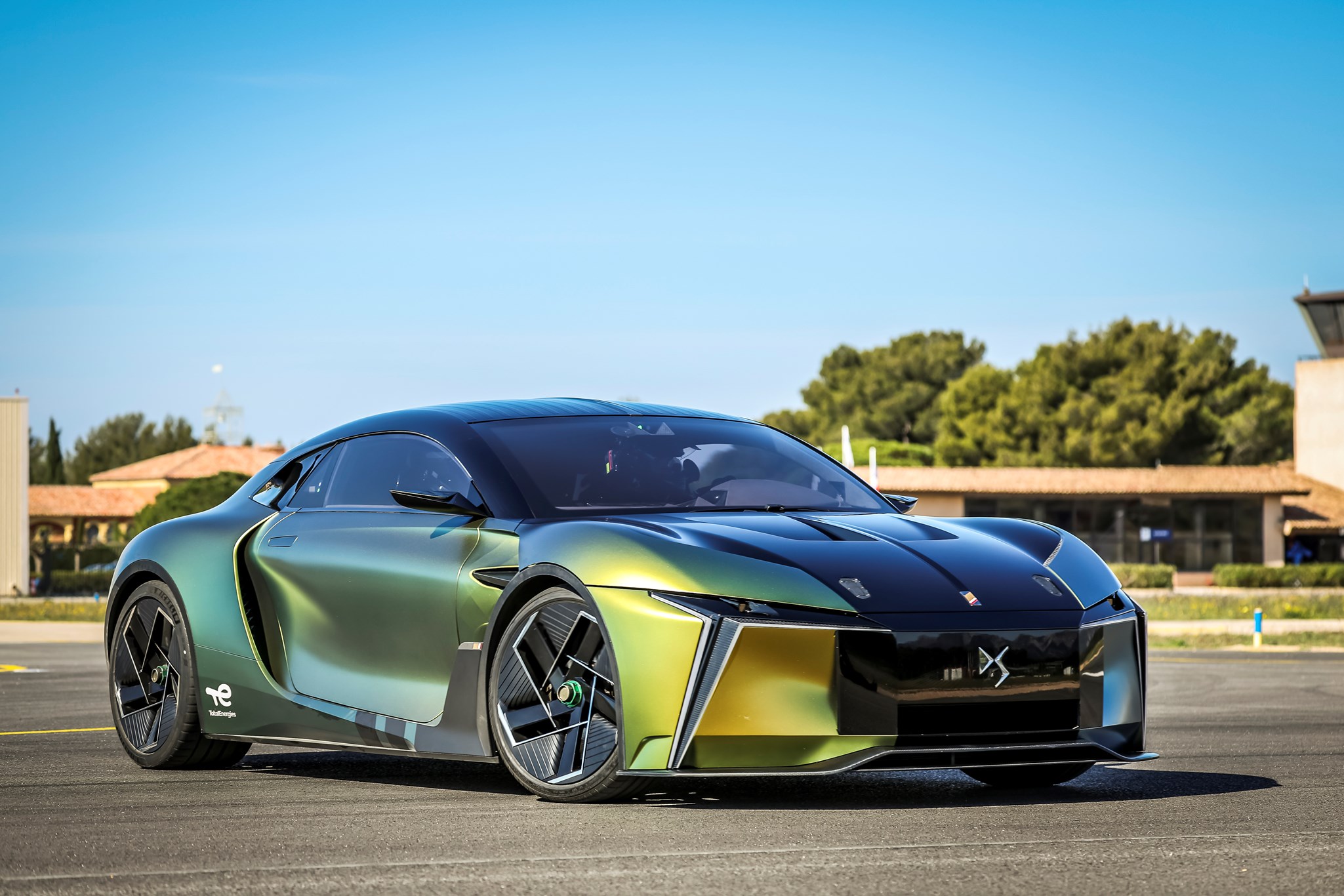
While most concept cars live a life ferried from showstand to showstand and are rarely driven at speed (if they’re driveable at all), this one has already been belting around test tracks trialling a game-changing braking system – more on which in a moment. But in between, it’s squeezed in this appearance at Monte Carlo, being exhibited in public at Casino Square the day before the race and at speed on track ahead of qualifying.
CAR grabs a word with Tavares after he’s emerged from the E-Tense Performance’s carbon cocoon. He’s all smiles: ‘What we all need to realise is that you can make thrilling sports cars with electric powertrains,’ he says. ‘You have a kick of acceleration which is outstanding – in fact much better than a combustion engine; you have a much smoother ride, because you have less noise, reduced vibrations – enjoyable for a gran turismo product; and your centre of gravity is very low, because the battery pack is below the floor, so consequently the lateral grip is very high,’ he continues. ‘So you have the sense that the car has fantastic grip, fantastic acceleration and it’s very smooth – what more do you need? I can testify that an electric sports car is a much better car than a conventional sports car. We just need to fix the problem of weight in the next 10-20 years, because the [electric] cars are too heavy. That is the major problem we are going to be facing for the next decades.’
Too heavy isn’t a criticism that could be levelled at the E-TP. Built around a carbon monocoque, it features two motors taken from DS’s Formula E racers. The front motor packs 335bhp – the same as the racing car – and the rear is upped to 470bhp, for an 805bhp total. The specially made battery is comparatively small, weighing around 250kg and the car 1200kg in total.
That’s relevant to future road car development, because the DS E-TP has been created with a design brief not in terms of lengthy range, the decisive factor in road-going EVs at present, but in the context of the further future when more rapid charging stations will be available. Smaller batteries, smaller range but faster charge times and less weight to carry around – a virtuous circle, once the infrastructure’s in place.
What kind of design cues does this concept preview?
Expect its front and rear light treatment to reappear in similar form on DS road cars from 2024 (when all of its new cars will be battery-electric and its combustion models will be gradually phased out). The three-plane front surface is similar to that of the Aero Sport Lounge concept, which itself previewed the new face of DS’s upcoming production models. Whether this car’s eye-catching 3D light-show graphics across the front and the cameras in place of headlights make it to production depends as much on regulations as production costs, however…
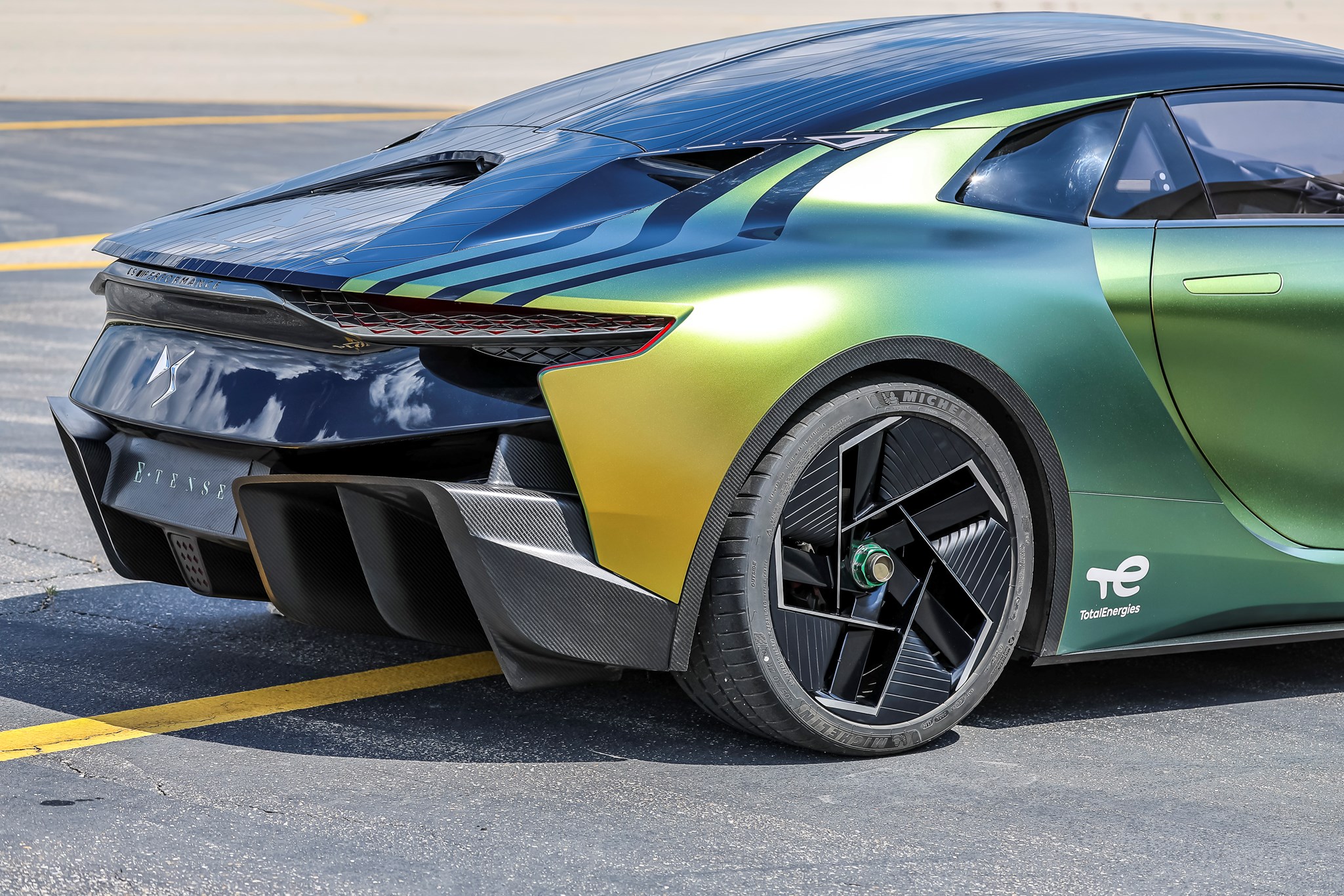
It was designed as a pure concept car but there has been interest from would-be customers: ‘If we were to produce a road version, it would be very expensive – more than €1m,’ says DS CEO Béatrice Fouchet. ‘For 10, 30 or 50 cars I think we could find clients – but nothing has been decided. Our priority is to focus on preparing the next generation of road cars and putting in place energy management insights from this car; after that we’ll see.’
I have a sense of déjà vu – I’m sure I’ve seen this car before…
It’s not the first time the E-TP has been shown in public. This is something of a second life for the concept. It first appeared in 2016 (when its frontal styling essentially previewed the face of the DS 7 crossover).
Around a year and a half ago, DS Performance was in search of an ideal testbed for EV technology, both for future road cars and for the new season’s third-generation Formula E car (which will feature front-axle regen). DS Performance director Thomas Chevaucher approached the board and the design department, and in effect said: ‘you know that E-Tense Performance concept… any chance we could use that…?’
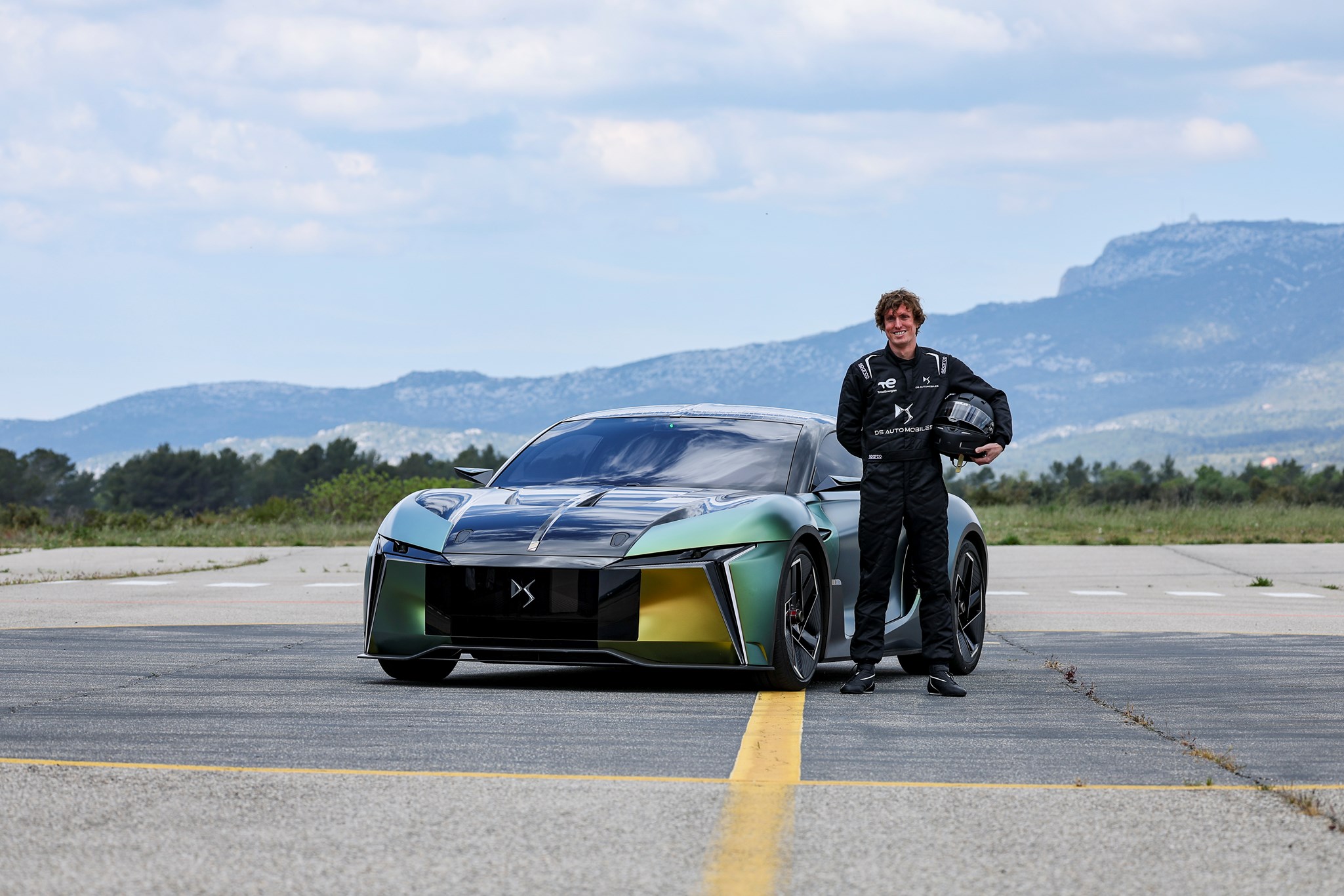
Chevaucher is with the team as we arrive at Le Castellet, the E-Tense Performance up on jacks and plugged into a mobile charging unit. It looks fantastic, its bodywork a textured latticework of surfaces and even inside the hangar that’s its temporary pit for the day, the paint subtly changes colour as you walk around the car.
‘This car is a tool for us to increase the transfer of technology from Formula E, and to showcase it,’ Chevaucher explains. Formula E development is always on the track and we wanted to do some development to understand more how we can use the same technology on the open road – that was the basic idea, the genesis of this project.
‘Then we got the idea to do it in collaboration with the design deptarment – and we said “let’s do it.” It’s reinforced the relationship between road and motorsport depts – that’s the cherry on the cake.’
So the E-TP has been give a technical overhaul, with a brand-new battery and powertrain engineering plus a thorough facelift to go with it. Its design details are stunning close up, but aside from the styling it previews, what its energy regen system could mean for future racing and road cars alike is the really fascinating bit.
Tell me more about this clever braking system…
There are discs and pads hidden behind the E-TP’s aero-surfaced wheels but they’re barely used to slow the car down. Practically all braking is done on regen alone, harvesting kinetic energy from the motors as the car decelerates and feeding them back into the battery.
When I push the brake pedal, unless it’s an absolute emergency stop from maximum speed, the hydraulic brakes won’t be in play at all. ‘When we use maximum performance we use just a little bit of the hydraulic brakes but not very much,’ stresses Chevaucher. He also assures me that I’ll be able to touch the brake discs after my run and they’ll be stone cold.
All that regen capability must mean this car needs a fairly serious battery?
The battery alone, created for the car by partner Total Energies and its subsidiary Saft, is very expensive.
That’s partly because it features innovative chemistry and cooling solutions but also because it can handle up to 600kW of regenerative power under deceleration. ‘There is no battery on the market that is able to handle 600kW of regen,’ says DS Performance director Thomas Chevaucher. ‘The idea is to investigate if, instead of increasing the size of an EV’s battery, you can increase the power capability of the battery. You can keep it light, you can regen more, and you can recharge very quickly – this car can charge from 10 to 90 per cent in five minutes.’
What’s it like inside?
Pure concept car, with almost alien-like organic latticework of surfaces across the dashboard, and generously sized digital screens. The quality is impressive, however: some concept cars are rough and ready up close but fit and finish feel lovely here. The infotainment system even works.
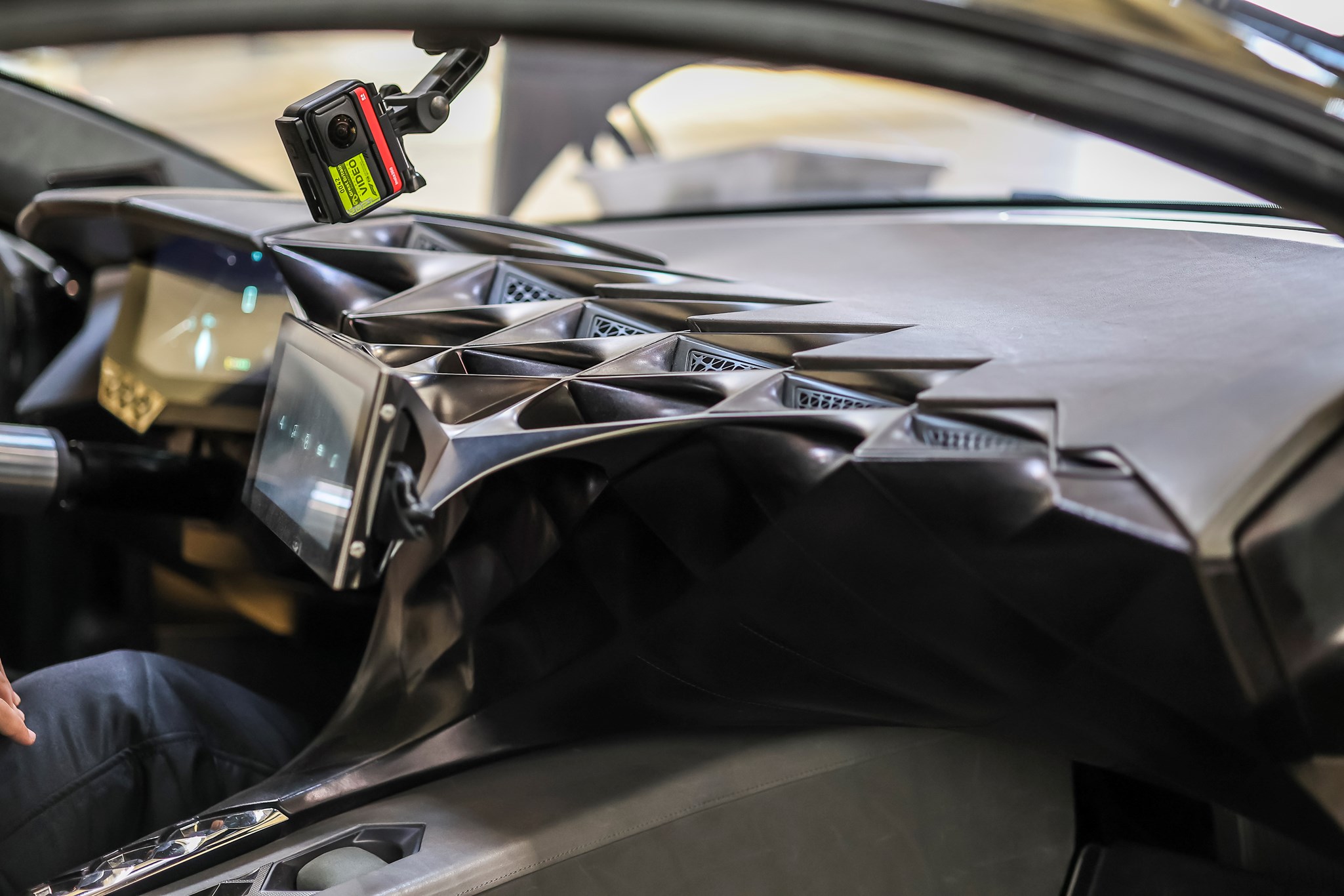
The futuristic supercar design language is blended with carbon racing seats and a cut-down racing steering wheel; the very same wheel, in fact, as in DS’s Formula E cars and one we’re not allowed to photograph for fear of other teams getting an eyeful at its displays and controls.
So – what’s it like to drive?
I’m joined by Alexandre Bengué, rally driver and DS development driver, in the passenger seat. This car represents a big investment for DS – hence the open runway and chaperone in the passenger seat.
Leaving the hangar, the motors’ and transmission’s whine increases exponentially with speed. This is not a silent EV. There’s no radio link, and no way I can hear Alex in the passenger seat.
The steering is ultra-sensitive, far more direct than any road car I’ve ever driven, thanks to the front axle’s motorsport-spec geometry. It takes concentration to prevent the car wandering at speed. And what speed. I push the accelerator pedal smoothly to the floor and the response is instant. The motors’ whine intensifies and the speed builds equally intensely. In the runways vast environs without the context of trees or road furniture whipping past it’s hard to contextualise the speed but suffice to say it feels really rather rapid.
What does the magic braking system feel like?
Like a normal racing car’s normal brakes, they need a firm press with a lot of pressure. But the remarkable thing is how normal they feel. The whole braking process feels remarkably natural. In theory, it’s an advantageous system over regular hydraulic brakes because it can’t be affected by pad wear or disc temperature. There’s no pushing of hydraulic fluid and calipers between your foot and the business of slowing down. Your only limiting factor in braking is tyre condition and the road surface beneath it.
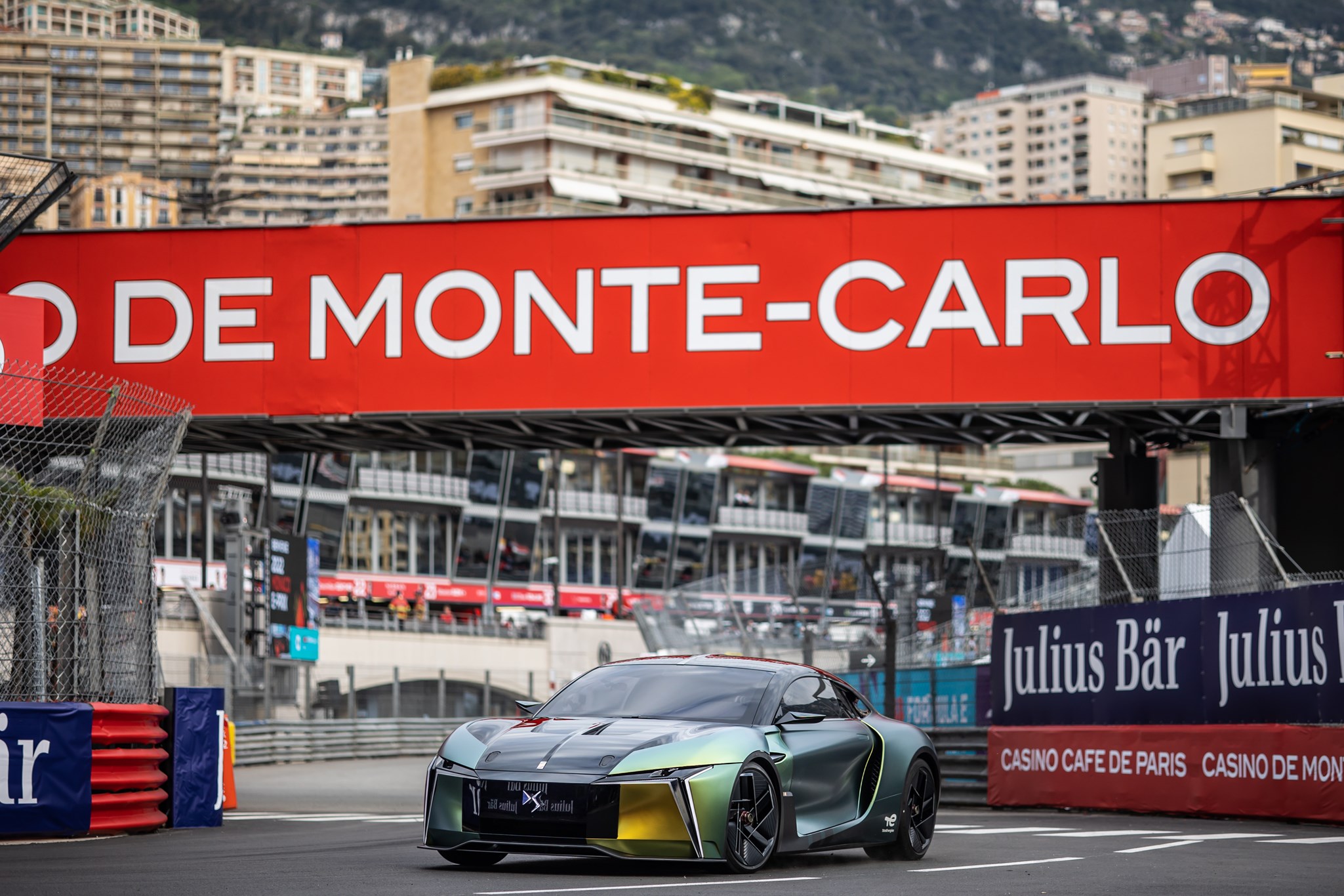
‘The first time I drove it I was a little bit nervous about a car that doesn’t have physical brakes,’ confides test driver James Rossiter (whose other job is Performance Director for the DS Formula E team). ‘I’m going to brake and it’s definitely going to stop? What’s been incredible throughout this process, especially the first couple of days I drove the car, is to understand the capability of having exactly the same feeling under braking, in every condition.
‘What excites me is that there’s so much opportunity to do different things, and I think we’re only scratching the surface. I’ve spent a few days giving this car grief on track and the braking is unbelievable – you stand on the brakes, and because you’re monitoring an electric motor, your inputs are so direct. You don’t have to put that pressure through the hydraulic lines, through the calipers…. There’s nothing there, it’s instantaneous.’
Going is more fun than stopping, though – what does acceleration feel like in this car?
Alex motions at me from the passenger seat. ‘Would you like to try a launch?’ Of course!
Bring the car to a halt, pull the bottom-left paddle behind the wheel, then flatten the accelerator pedal, he instructs. Take a deep breath, and release the paddle. Jeez. I’ve experienced some rapid acceleration but this is something else. The E-TP can theoretically get from 0-62mph in less than two seconds and that feels entirely believable. After all, it can generate as much as 5900lb ft of torque. How much of that torque can be transmitted to the tarmac is limited by tyres (road-spec Michelin Pilot Sport 4 S) and driveshafts – some first-gen Formula E cars snapped their driveshafts in early testing when the driver released the pit-limiter… Today, the E-TP isn’t quite wound up to its full hundreds of and thousands of bhps and lb fts but trust me, it still feels pretty brisk.
What’s cornering like?
Given we’re one of the first people outside of DS to drive the car, and at the time of writing the only UK media, the prospect of 5900lb ft at the wheels is another reason DS has chosen the open runway setting. Handling exploration is therefore limited to improvised hairpins at either end of the runway but the low centre of gravity and light weight is immediately apparent. I can see what Tavares was talking about back in Monaco.
With only 250kg of battery to lug and race-spec suspension, the impression is this car really handles. The tricky thing, as always with driving on a wide open airfield but especially in a car without the context of engine sound and gearchanges, is to judge the speed, and gauge just how much speed to wipe off before turning the wheel.
I’m happy to give the multi-million-Euro concept back to the team in pristine condition at the end of the run, and I imagine Alex is too.
Verdict
This really is a fascinating car – a show-stopping design study but one with engineering substance, and a punishing testing remit ahead of it. More than a pretty face, it’s a show car which has a soul.